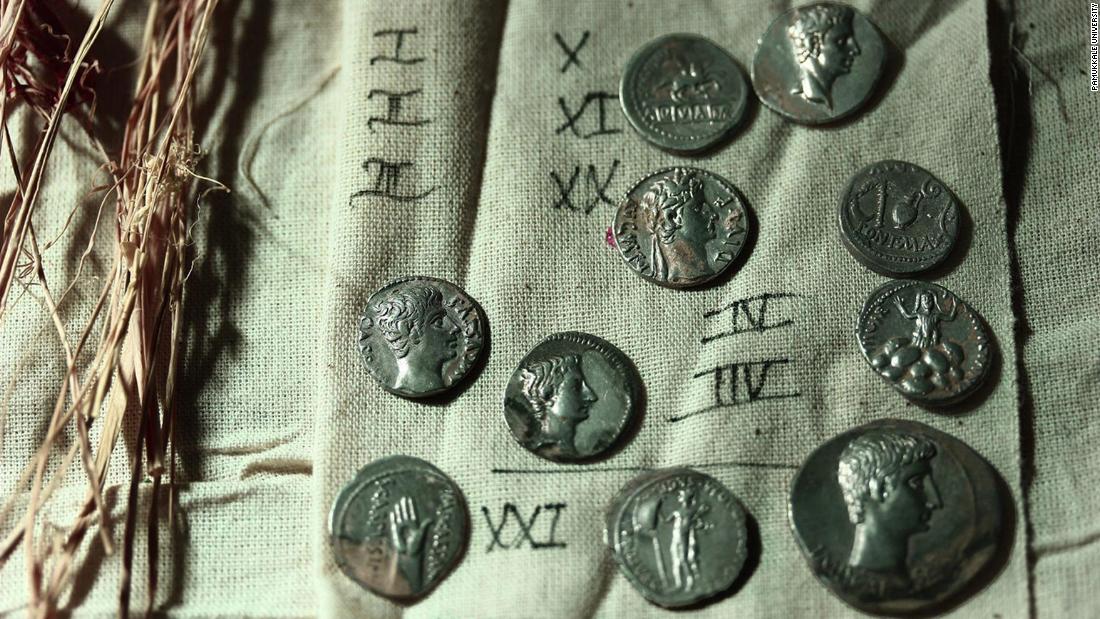The silver coins were found in a jug during archeological excavations led by researchers from Pamukkale University, according to a press release from the university.
The ruins of Aizanoi are found in the present-day province of Kutahya, Western Turkey.
The coins were found in 2019 and date from the period of Emperor Augustus, who ruled from 44 BC to 14 AD.
He was the first Roman emperor, who took over from Julius Caesar and built an empire that would eventually stretch from the United Kingdom to Egypt, and boast on his deathbed: “I left Rome built of bricks and marble.”
Many of the coins have the face of Augustus, while others have the equivalent of Marcus Junius Brutus – one of the main figures in the assassination of Caesar in 44 BC – and some show Caesar himself.

Archaeologists believe the coins may have been brought to Aizanoi by a soldier. Credit: Pamukkale University
Elif Ozer, chief archaeologist and professor at the university, said the coins are a very special and unique collection brought to Aizanoi by a senior soldier.
In the press release, published earlier this month, it appears that most coins were struck in southern Italy.
“This is the most special silver coin find of recent times,” Ozer added.
In September 2018, at least 300 Roman coins were found in a soapstone pot excavated in the basement of the Cressoni Theater in Como, north of Milan.
And in October, an ancient Roman coin described as a ‘naked and shameless celebration’ of the assassination of Caesar set a new record for a coin sold at auction.
The “aureus” coin, bought by an anonymous bidder for £ 2.7 million ($ 3.5 million), contains a portrait of Brutus.
